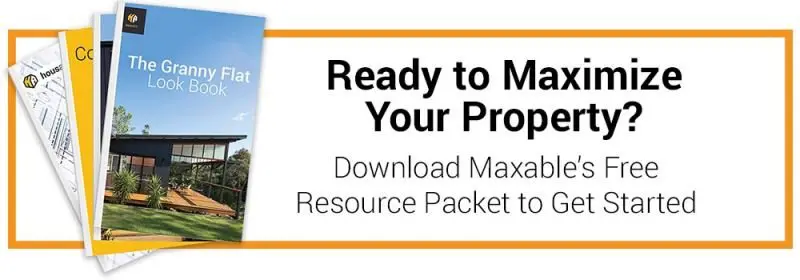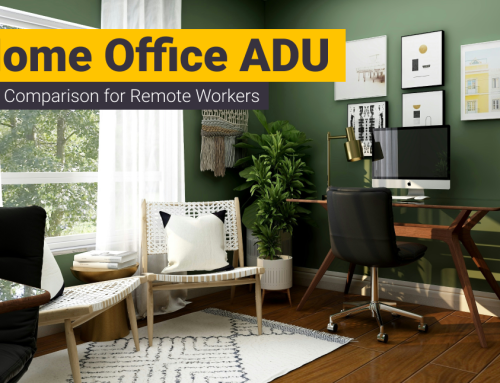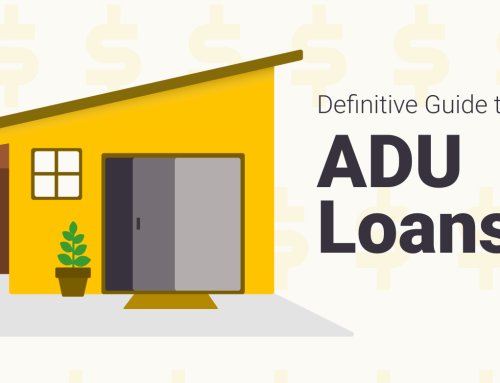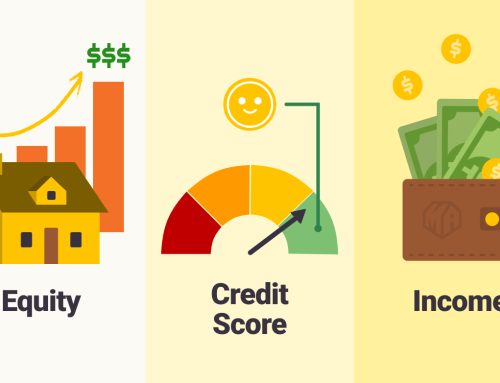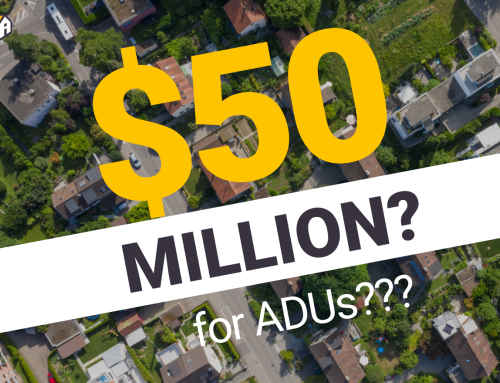Special thanks to Meredith Stowers of Loan Depot for this guest post. If you’re looking for financing reach out to her.
Building your own accessory dwelling unit is right in your grasp. You have space, you have the right architect and live in the proper zones. Just one thing stands in your way: money.
Sometimes the overhead costs of building an ADU can be very hefty to pay for up front. There are permitting costs, general contractors, architects and time that all add up.
This new renovation isn’t going to pay for itself…or is it?
Imagine if your home, literally, helped pay for itself.
With housing affordability skyrocketing nationwide, homeowners are turning to Accessory Dwelling Units (ADUs), home energy efficiency, and solar to earn money on the home they already own. With so many home rehab loan options available, including 203k loans, VA loans, and fix-and-flip loans, it makes financial sense.
How does it work?
What is a rehab loan?

A rehab loan, also known as a renovation loan, allows homeowners to finance a purchase or a refinance alongside a renovation of a home through a single mortgage.
By combining multiple loans into one, it simplifies the renovation process by eliminating the frustration of financial guesswork.
Let’s look at an example:
Imagine George buys a $350,000 single family home with 1,500 square feet that needs remodeling. At today’s mortgage rates, George will pay $2,919 in monthly mortgage payments. According to the National Association of Realtors, homeowners like George will spend $19,000 on credit cards to remodel his home in the first year of ownership.
Even worse, when you spend $19,000 on a typical credit, your largest expenditure may be on the interest payment – as high as $4,750 in the first year!
George’s Net Monthly Payment*
$2,522 monthly mortgage + $397 credit card payment (interest only) = $2,919
His neighbor, Kyle, bought a similar house but remodeled it using a Rehab Loan.
Kyle converted his detached garage into a 1-bedroom rental unit and charges $1,500 rent. He also added solar and then switched to electric cars to save $60 gas each week. Kyle’s total monthly mortgage payment is higher ($3,254), but his interest rate is much lower than a credit card and the interest payments are tax deductible.
While only your CPA can estimate your tax-deductible portion, we can estimate the following:
Kyle’s Monthly Payment**
$3,254 monthly mortgage
– $200 electric bill
– $240 per month for gas
+ $1,500 rental income
____________________
$1,314 monthly payment
So Kyle is paying $1,605 per month less for a bigger, remodeled home.
Increase Your Home Sale Price with a Rehab Loan

Nobody wants to buy an old house. While your neighbors’ homes may be selling at premium prices, take a look inside to see what buyers are paying for: a remodeled, updated home.
Buyers are also paying more for bigger homes with more living space, especially with a granny flat or rental unit.
Fortunately, rehab loans make it easier to increase the value and square footage of your home. How does this work? Let’s look back at George and Kyle:
George and Kyle buy similar homes for $350,000. Their homes have 3 bedrooms and 1,500 square feet each. George does what most homebuyers do, according to the National Association of Realtors: Spend $19,000 on credit cards to make basic improvements at a 25% interest rate.
Kyle decides to convert his detached garage into a 1-bedroom rental unit, adding 800 square feet of living space. The cost of the renovation loan adds $100,000 to his mortgage or $481 more monthly payment, but he can charge $1,500 in rent.
When George goes to sell his home, it may have decreased in value because it’s still outdated and needs repairs.
Kyle may get the value of more square footage in the appraisal. In fact, if Kyle added 800 square feet when he built the rental unit, he could potentially receive an appraisal for $186,000 more for his home!
| George | Kyle | |
| Bought home | $350,000 | $350,000 |
| Remodeled it | $19,000 | $100,000 |
| TOTAL SPENT ON HOME | $369,000 | $450,000 |
| Estimated Value after Remodel | $369,000 | $536,666 |
| Increase in Home Equity | $0 | $186,666 |
| Net Return on Investment | $0 | $86,666 |
When Kyle goes to sell his home, buyers will probably love the remodel and extra space, so it will sell quickly at a higher price. George will have trouble attracting buyers, and they may require him to make repairs that he has put off doing.
With so many finance options, building an ADU may not be too far out of reach. It all begins with a free ADU Planning Phone Call. Talk to you soon!


